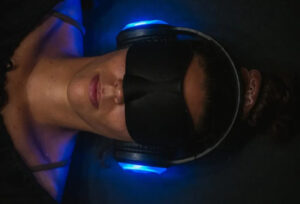
The Healing Power of the Human Voice: A Journey Through History and Science
Throughout the ages, the human voice has held a mysterious and awe-inspiring quality. From ancient chants to modern therapeutic practices, the healing power of the human voice has been revered across cultures and civilizations. In this post, we’ll embark on a journey through history and delve into the scientific reasons behind why the human voice has the remarkable ability to heal.
A Glimpse into History:
The concept of using the human voice for healing dates back to ancient civilizations. Indigenous cultures around the world have practiced vocal toning, chanting, and singing as a means of connecting with the divine, promoting harmony, and restoring well-being. In ancient Egypt, Greece, and India, vocal techniques were incorporated into spiritual rituals and healing practices. The Greeks believed in the power of music and sound to influence emotions and bring about balance in the body and mind.
The Vibrational Resonance:
At the heart of the healing power of the human voice lies the principle of vibrational resonance. Everything in the universe, including our bodies, is composed of vibrations at various frequencies. When we speak, chant, or sing, we produce vibrations that interact with our bodies on a cellular level. This interaction can have profound effects on our physical, emotional, and mental states.
Reasons Behind the Healing Power:
- Sound and Stress Reduction: The rhythmic and soothing qualities of the human voice have the ability to reduce stress and induce relaxation. Singing or listening to calming vocal melodies triggers the release of endorphins, which are natural stress-relievers.
- Activation of the Vagus Nerve: The vagus nerve, a key component of the parasympathetic nervous system, plays a crucial role in regulating heart rate, digestion, and emotional responses. The vibrations produced by vocalization stimulate the vagus nerve, promoting a sense of calm and well-being.
- Resonance and Cellular Healing: Our bodies are made up of trillions of cells, each with its own vibrational frequency. Vocal toning and chanting can create resonance within the body, helping to harmonize these cellular vibrations and promote healing.
- Expression of Emotions: The human voice is a powerful tool for expressing emotions that might otherwise be difficult to articulate. Singing and vocalization allow us to release pent-up feelings and find catharsis, contributing to emotional healing.
- Brain Chemistry: Scientific studies have shown that singing and chanting release oxytocin and other neurochemicals associated with bonding, empathy, and feelings of well-being. These chemical responses contribute to the healing effects of the human voice.
- Breathing and Mindfulness: Many vocal practices involve conscious breathing, which has its own array of benefits. Deep breathing stimulates the parasympathetic nervous system, reducing stress and promoting mindfulness.
- Community and Connection: Group singing and chanting have been shown to foster a sense of community and social connection. This sense of belonging has positive effects on mental health and overall well-being.
Embracing the Healing Potential:
Whether it’s singing in the shower, chanting during meditation, or joining a community choir, there are countless ways to tap into the healing power of the human voice. Science continues to uncover the intricate connections between vocalization, vibrations, and our well-being, validating what ancient cultures have known for centuries.
In a world filled with noise and distractions, taking the time to harness the healing potential of your own voice can be a transformative journey. So, let your voice be a vessel of healing, a conduit for expressing your emotions, and a source of connection with yourself and others. Embrace the magic of the human voice and let its vibrations resonate through your life.




